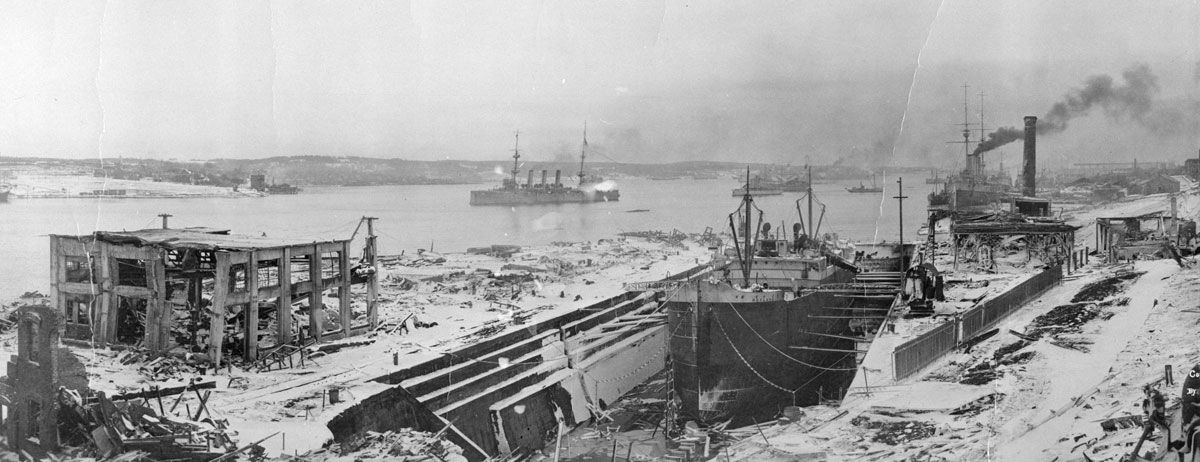The Halifax Explosion was a catastrophic disaster that occurred on December 6, 1917, in Halifax, Nova Scotia, Canada. It was caused by the collision of two ships, the SS Mont-Blanc, a French cargo ship loaded with explosives, and the SS Imo, a Norwegian vessel. The collision resulted in a massive explosion that destroyed much of the city and killed approximately 2,000 people.
The explosion occurred during World War I, when Halifax was a major military and naval hub. The SS Mont-Blanc was on its way from New York to Bordeaux, France, carrying a load of explosives, including benzol, picric acid, and TNT. The SS Imo was en route from New York to Belgium, carrying relief supplies for war-torn Europe.
As the two ships approached the harbor, they were caught in a dense fog, making it difficult to see. The SS Imo was navigating through the Narrows, a narrow channel leading into the harbor, when it collided with the SS Mont-Blanc. The impact caused a spark, which ignited the explosives on the French ship. The resulting explosion was massive, with the force equivalent to 2.9 kilotons of TNT.
The explosion destroyed much of the city, including the North End neighborhood, which was home to many immigrants and working-class families. It also damaged or destroyed buildings throughout the city, including the Halifax Citadel, St. Paul's Church, and the Public Gardens. The blast was felt as far away as Cape Breton, over 200 miles to the north.
The explosion caused widespread devastation and loss of life. Over 1,600 people were killed immediately, and many more were injured. The aftermath of the disaster was chaotic, with rescue workers struggling to find and care for the injured, and to locate and identify the bodies of the deceased.
The Halifax Explosion was a major disaster that had a lasting impact on the city and its people. It remains one of the worst human-made disasters in Canadian history, and it serves as a reminder of the importance of safety and preparedness in times of war and peace.








